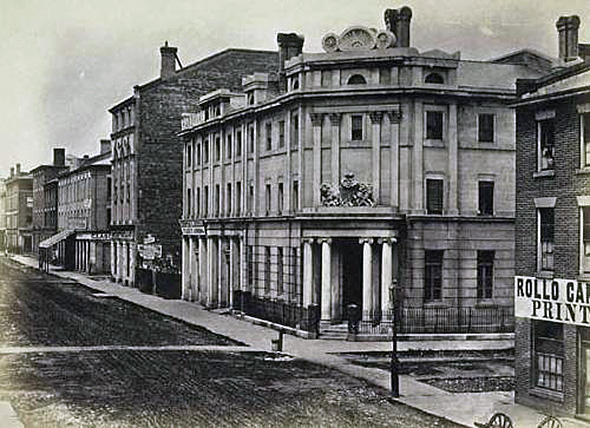The 1850s were a time of war, rumblings of war, and discontent. Birthed out of this strife and catastrophe were new schools of thought, new ideas about life that would leave a mark not only on science fiction, but also on all of society. The aftereffects of the events and ideas of the 1850s are still very prevalent on our stories, culture, and lives today.
History:

Wars and internal conflicts plagued the world, and these wars were only a foreshadowing of the things that were to come in the following century. From 1854-56, Russia struggled against the Ottoman Empire, France, Britain, and the Italians for denominational rights in the Holy Land in the conflict known as the Crimean War. Beginning also in 1854, and lasting through the rest of the decade, were the “Bleeding Kansas” skirmishes that preceded the American Civil War. In 1856, Great Britain launched into the second Opium War against China over their dysfunctional diplomatic and trade relations.
Science:

In spite of the bloodshed of this decade, many scientific discoveries were made. For example, during the 1850s, a scientist named John Snow was able to track an outbreak of Cholera to its source, and the discipline of epidemiology was born. In Germany, the first fossils considered to have belonged to “cave men” were discovered in the Neanderthal Caves. Also, amateur astronomer Richard Christopher Carrington researched the existence and effects of solar flares. Inventor Elisha Otis developed his safety elevator during this time period, which would lead to the rise (yes, a pun), of skyscrapers in the decades that followed.
Stories:

During the 1850s, a French author who would come to make a tremendous impact on science fiction was growing in popularity. In 1851, Jules Verne published a short story called “A Voyage in a Balloon”. The story expressed the wonders and terrors of lighter-than-air travel, and foreshadowed later novels he would write, such as Five Weeks in a Balloon, Around the World in Eighty Days, and even Robur the Conqueror. The story was the first of Verne’s writings to be translated into English, and was only a glimpse at the madcap, whimsical adventures he would introduce into the science fiction genre in years to come.
In 1858, science fantasy writer Fitz James O’Brien published the book, The Diamond Lens, about a girl who lived in a molecule-sized world in a drop of water. Though containing some fantasy elements, it introduced the idea of the microcosm, which would later become associated more closely with science fiction.
Worldview:

1859 saw the publication of a book that sent shockwaves through society which we still feel today. An Englishman named Charles Darwin published a book on his ideas about the development of the natural world entitled “On the Origin of Species”. The book introduced ideas such as natural selection, and biological evolution, which have totally transformed not only natural science, but also philosophy, psychology, theology, and a host of other disciplines in the century-and-a-half since its publication.
Out of the ashes and ruins of war and destruction rose some of the most influential authors, ideas, and advances that we have seen in the past two centuries.
Keep on glowing in the dark,
Elora
No comments:
Post a Comment